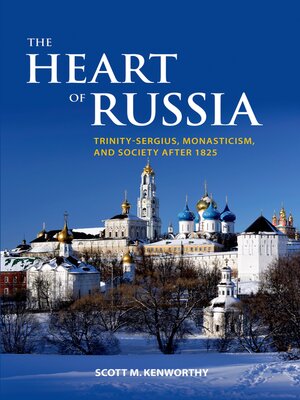The Heart of Russia
ebook ∣ Trinity-Sergius, Monasticism, and Society after 1825 · A Woodrow Wilson Center Book
By Scott Mark Kenworthy

Sign up to save your library
With an OverDrive account, you can save your favorite libraries for at-a-glance information about availability. Find out more about OverDrive accounts.
Find this title in Libby, the library reading app by OverDrive.



Search for a digital library with this title
Title found at these libraries:
| Loading... |
In the 1830s and 1840s, increasing numbers of Russians renounced the modernized, secularized, Westernized Russia created by Peter the Great in an effort to revive alternative lifestyles based on Orthodox spirituality and values. This effort found expression in a revival of monasticism that began in the era of Nicholas I and would last for the duration of the imperial period, brought to an end only by the cataclysm of revolution and repression of the new Bolshevik regime. Suppressed by the communists, Russian monasticism experienced another revival in the post-World War II era and again in the post-Soviet period, demonstrating that the impulse to renounce the contemporary world for the cloister is a central pattern of Russian religiosity. This book is the first comprehensive analysis of these monastic revivals, presenting a fundamentally new picture of religion in modern Russia. Scott Kenworthy's approach is that of a contextualized microhistory: an in-depth study of one monastic complex, framed within research on monasticism more broadly. The case study here is Russia's largest and most famous monastery, the Trinity-Sergius Lavra in Sergiev Posad, near Moscow. With the collapse of the Soviet Union, the Russian Orthodox Church is again experiencing a revival, and monasticism is playing a central role in this resurgence. In the search to recover the past, Russian Orthodox are turning to the nineteenth century revival as a normative model. Numerous Russians are once again renouncing the contemporary world—in this case, both the socialist past and the post-socialist capitalist present—and opting for a mode of life that represents a return to past values. Monasteries are again foci of popular piety as well as of important publishing activities, and their spirituality is regarded as the purest expression of Orthodox ideals. This book provides an essential basis for understanding Orthodoxy in its historical context and its contemporary manifestations.






